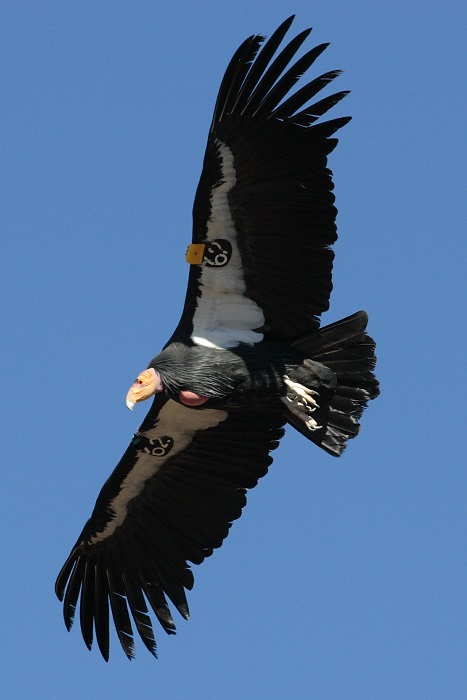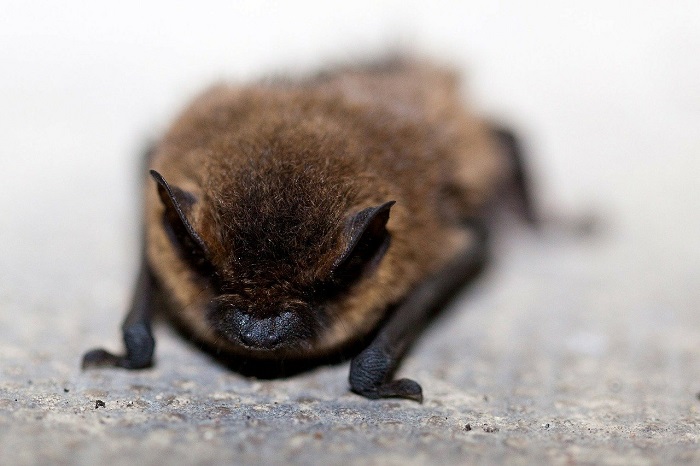The fight for survival
The Western Snowy Plover, Tricolored Blackbird, and Western Burrowing Owl.
The Desert Tortoise, Razorback Sucker, and Kit Fox.
Marbled Murrelets, Salt Marsh Harvest Mice, and Southwestern Willow Flycatchers.
No, these are not the mascots of Division III colleges. They are the focus of recent environmental studies (performed by consultants after the RFP/RFQ process) for monitoring and protecting endangered and threatened species.

The largest flying bird in the country is one of the many species saved by the Endangered Species Act.
The Endangered Species Act, passed in 1973, was aimed at preventing extinction and supporting the recovery of threatened wildlife. The Act has undergone several changes, including revisions in 2019 that allow for economic assessments to be taken into account when determining protections for species.
“Looking back on the Endangered Species Act’s history, it has helped stabilize populations of species at risk, prevented the extinction of many others, and conserved the habitats upon which they depend,” the U.S. Fish & Wildlife Service states. “All Americans can take pride in the fact that, under the protection of the ESA, the California condor, grizzly bear, Okaloosa darter, whooping crane, and black-footed ferret have all been brought back from the brink of extinction.”
In the past year, IMS covered approximately 40 projects related to environmental planning, protection, and monitoring of threatened species, along with another 80 projects for on-call services that likely called for professional services related to endangered species.
IMS covers environmental projects from public agencies for its architectural, engineering, and consulting clients through daily leads from RFPs/RFQs and Advance Notices of upcoming projects. The projects related to endangered species include management plans, habitat restoration and design, development of mitigation measures for construction projects, monitoring during construction, surveys for species abundance, and planning for Incidental Take Permits.
In addition to projects involving the species listed at the start of this article, IMS has covered recent RFPs/RFQs such as:
* The US Department of the Air Force released an RFP in April 2020 to conduct a bat telemetry study for the conservation of species including the Big Brown Bat, Eastern Red Bat, Hoary Bat, and Evening Bat (IMS 513710).
* The State of Oregon issued an RFP in April 2020 to develop a conservation plan for the Dungeness crab fishery authorization through an Incidental Take Permit. The project goal is to monitor and provide mitigation solutions for whale entanglements in Dungeness crab nets (IMS 513166).
* The State of Nevada, Department of Transportation, released an RFP in March 2020 to provide biological monitoring services for three major highway projects (IMS 506902).

The Air Force has taken steps to ensure the continued existence of several threatened species of bats.
* Colorado State University released an RFP in January 2020 for baseline surveys and habitat assessments for monarch butterflies and western and crotch bumblebees at three U.S. Air Force facilities (IMS 500081).
* The U.S. Department of Agriculture released an RFP in January 2020 to determine the presence or absence and reproductive status of California Spotted Owls in the San Bernardino National Forest (IMS 500369).
* The State of Arizona released an RFP in late 2019 to provide bald eagle nest watching services for several known breeding areas (IMS 454196-1).
In addition to these projects, the Endangered Species Act has been in the media and entertainment spotlight in the last year.

Many iconic animals around the world face extinction without conservation efforts like the ESA. (Source: Nick Karvounis)
In March 2020, the Netflix documentary “Tiger King” chronicled the big-cat business of Joseph “Joe Exotic” Maldonado-Passage. A federal grand jury found Maldonado-Passage guilty of murder-for-hire. He was also found guilty on nine counts of violating the Endangered Species Act for the sale of protected wildlife and the killing of five tigers.
The show entertained and horrified millions of viewers, but also drew attention to legislation — the Big Cat Public Safety Act — that would impose restrictions on the possession and exhibition of big cats such as the lion, tiger, leopard, cheetah, and jaguar.
In April 2020, the Endangered Species Act was in the news after a legal ruling involving the Keystone XL pipeline. A US District Judge in Montana cancelled a key permit for the pipeline related to discharges of fill material at water crossings.
According to Jurist Legal News & Research, “[Judge Brian] Morris found substantial evidence that reissuing the permit ‘may affect’ certain endangered species, such as the pallid sturgeon and the American burying beetle.”
The article said the ruling “could seriously delay the project. The permit will be needed for future construction across hundreds of rivers and streams between the Canadian border and Nebraska.”
Under the ruling, the Army Corps of Engineers would be required to go through a formal consultation with the Fish & Wildlife Service to obtain the revised permit for fill material discharges.

While human encroachment upon the environment is inevitable, it’s something that can be done with a responsible eye towards the effects of new development upon the natural world. (Source: Robson Machado)
However, that process is unlikely to stop the project. A study of proposed projects from 2008 to 2015 found that the Fish & Wildlife Service intervened in only two of the 88,000 projects.
According to the study: “In contrast to conventional wisdom about section 7 implementation, no project was stopped or extensively altered as a result of FWS finding jeopardy or adverse modification during this period.”
Opinions about the Endangered Species Act are as varied as the species that are listed by the Fish & Wildlife Service — 892 flowering plants, 303 invertebrate animals, 936 non-flowering plants, and 399 vertebrate animals. But it is the law of the land, and its protections and procedures must be taken into account.
The Act’s long reach and laudable goals explain why IMS and its clients see so many projects where biological studies are sought by public agencies to help protect natural habitats and keep construction projects moving and in compliance. This year, National Endangered Species Day was May 15. Naturally, there are podcasts available about species decline and recovery. Naturally, IMS will continue to cover and track these environmental opportunities.

